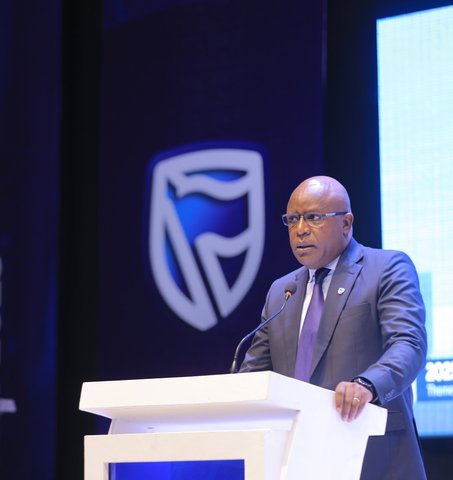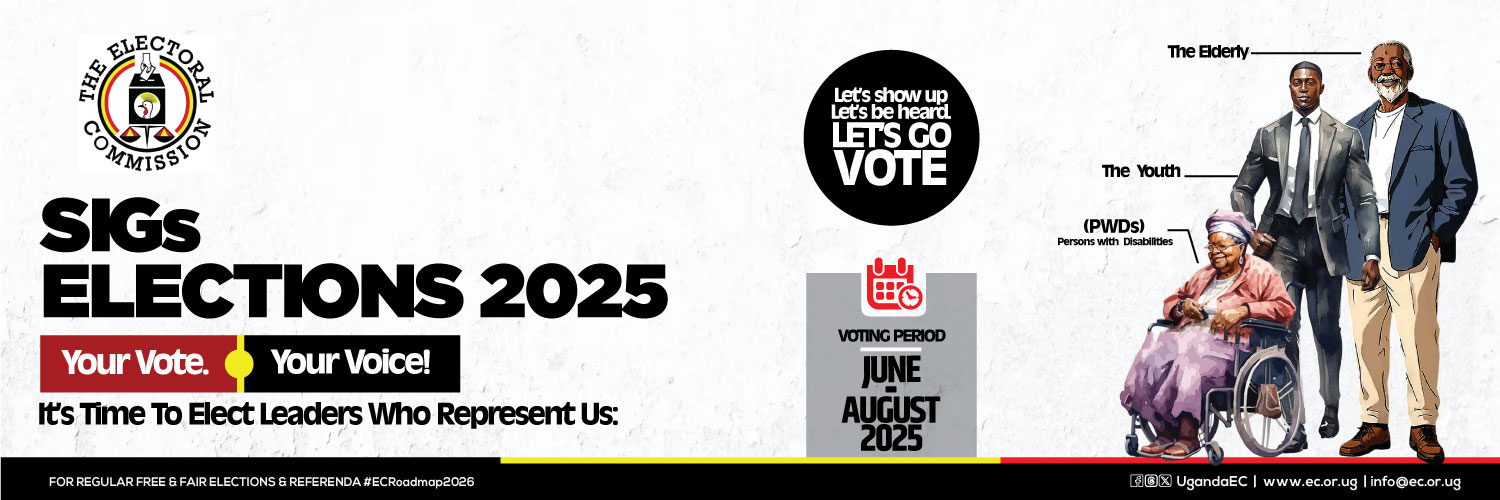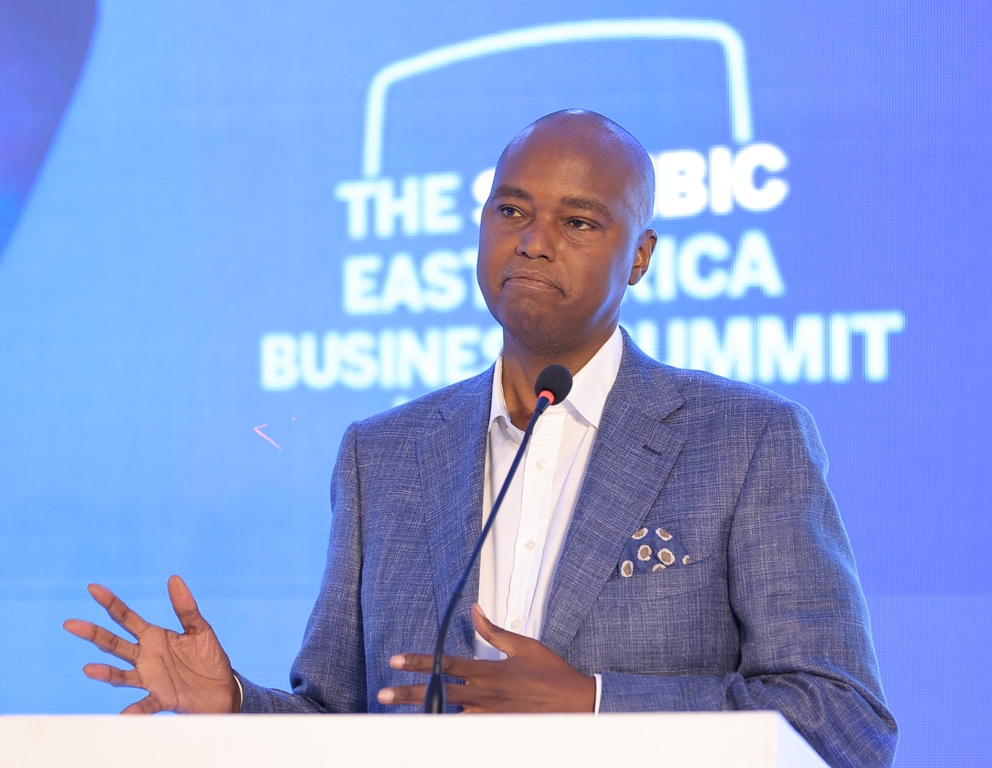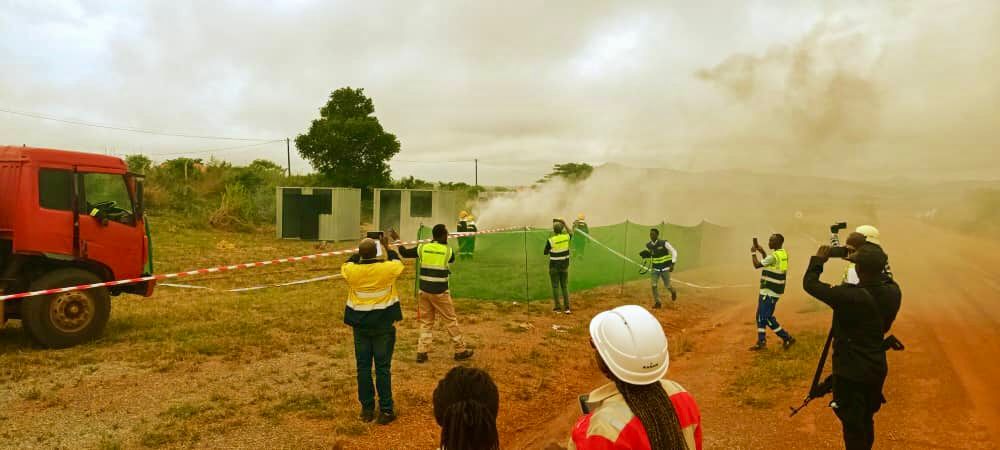From recovery to recalibration: What’s beneath Stanbic’s shining 2024 results
After two years of modest growth and post-pandemic recalibration, Stanbic Uganda Holdings Limited has emerged in 2024 with what appears to be a banner year—reporting record profits, stronger balance sheets, and bolder social investments – a thing Francis Karuhanga, the Chief Executive, attributed to the Group’s maintaining of strategic focus, discipline, adaptability, and innovation.

After two years of modest growth and post-pandemic recalibration, Stanbic Uganda Holdings Limited has emerged in 2024 with what appears to be a banner year—reporting record profits, stronger balance sheets, and bolder social investments—a thing Francis Karuhanga, the chief executive, attributed to the Group’s maintaining of strategic focus, discipline, adaptability, and innovation.
The Group declared that its profit after tax surged to 16.2%, total assets Shs10.4 trillion, up from Shs9.3 trillion and its highest-ever dividend of Shs300 billion, subject to shareholders’ approval. Karuhanga attributed this to a stable economy and prudent fiscal and monetary policy management.
This turnaround is striking when contrasted with 2022 and 2023, which were marked by subdued loan growth (3.1% each year), cautious provisioning, and tighter margins. In 2024, the bank seems to have broken free from the gravity of COVID-era uncertainty—at least on the surface.
Stanbic may have delivered a confident earnings story, but it is also clearly repositioning—choosing resilience over rapid expansion, and long-term social returns over short-term yield. That strategy carries both strength and subtle warning signs.
Record Profit and Resilient Revenue Growth
Profit after tax hit Shs478 billion, underpinned by: a 7.2% rise in net interest income, driven by larger lending and investment portfolios, a 10.8% boost in non-interest revenue (NIR), thanks to higher transaction volumes, and operating efficiency gains, with a reduced cost-to-income ratio of 47.2% (down from 48.9%).
Shareholder Value Delivered
The Group declared a combined dividend of Shs300 billion—up 7.1% from the previous year—underscoring management’s confidence in capital strength and profitability.
Operating expenses grew just 4.8%—well below inflation—despite a rising headcount and increased community investments. Strategic cost control and digitisation continue to deliver measurable benefits.
Impairment charges for credit losses dropped sharply from Shs69 billion to Shs34 billion, and non-performing loans (NPLs) fell to 1.5%, the lowest in years. It’s a sign of credit discipline—or conservatism in provisioning.
Loan Growth Remains Tepid
Despite strong deposit mobilisation (up 12.2%), net loans to customers only increased 3.5%—matching the sluggish pace of the last two years. That’s puzzling for a bank flush with liquidity and signals three potential undercurrents: cautious credit underwriting, weak demand from quality borrowers, and preference for lower-risk asset classes (e.g., interbank placements, government securities).
Portfolio Rebalancing and Margin Strain
While total interest income rose, returns on marketable and investment securities actually declined year-on-year—suggesting yield compression or a flight to safer, lower-return assets. This could reflect anticipation of rate volatility or an increasingly conservative investment approach.
Heavy Intra-Group Funding Movements
Amounts due from group companies soared from Shs330 billion to over Shs1.17 trillion—raising questions: is Stanbic centralising surplus liquidity outside Uganda or is local lending taking a back seat to regional or global group funding strategies? Either way, this reallocation indicates more liquidity than lending appetite in the domestic market.
Shrinking Trading Assets and Reduced Buffer Income
Trading assets fell by over Shs360 billion (from Shs1.77 trillion to Shs1.41 trillion), and financial investments also dipped. This shrinking cushion of liquid income-generating assets could leave the bank more exposed to volatility if core lending doesn’t pick up.
Purpose-Driven Lending, Lower Commercial Returns
Stanbic disbursed Shs 973 billion to SMEs (including Shs173 billion to women-led enterprises) and Shs454 billion to agriculture—Shs170 billion of which went to smallholder SACCOs. While this aligns with national development goals, it comes with compressed margins and heightened risks. Social value here may outpace financial return.
Stanbic’s low-interest SACCO lending under EERF (rates as low as 10%) has reached Shs170 billion in cumulative disbursements. That’s good for farmers—but will these be profitable portfolios? Risk-weighting remains high, and long-term recoverability could pose future balance sheet pressures.
From education and maternal health to climate initiatives, Stanbic spent 1% of operating income (Shs13 billion) on Corporate Social Investment. While admirable, this is a material allocation in a year of moderate loan growth and tightening spreads.
Conclusion: A Quiet Recalibration
2024 was not just a rebound year for Stanbic—it was a strategic recalibration. The bank delivered strong financial results, anchored by disciplined execution, while leaning into social impact. But underneath the applause-worthy headlines, there are signs of cautious repositioning.
Sluggish loan growth, shrinking trading books, declining yields, and intra-group liquidity shifts all hint at a bank hedging its bets. Stanbic is choosing stability over aggressive expansion, impact over pure profit—and in doing so, rewriting the rules of what growth looks like in a post-COVID, low-margin world.
The 2024 results are solid—but the real story is in how Stanbic chooses to grow next. The year ahead will test whether this recalibrated engine can accelerate again—without sacrificing its hard-earned balance.







